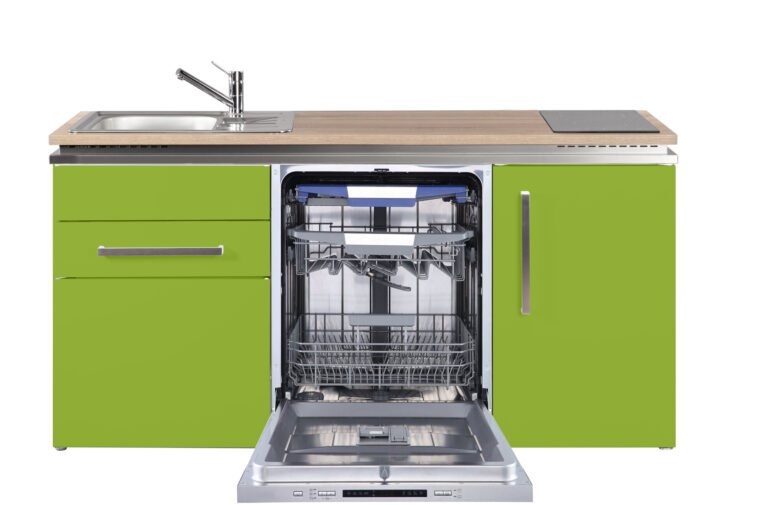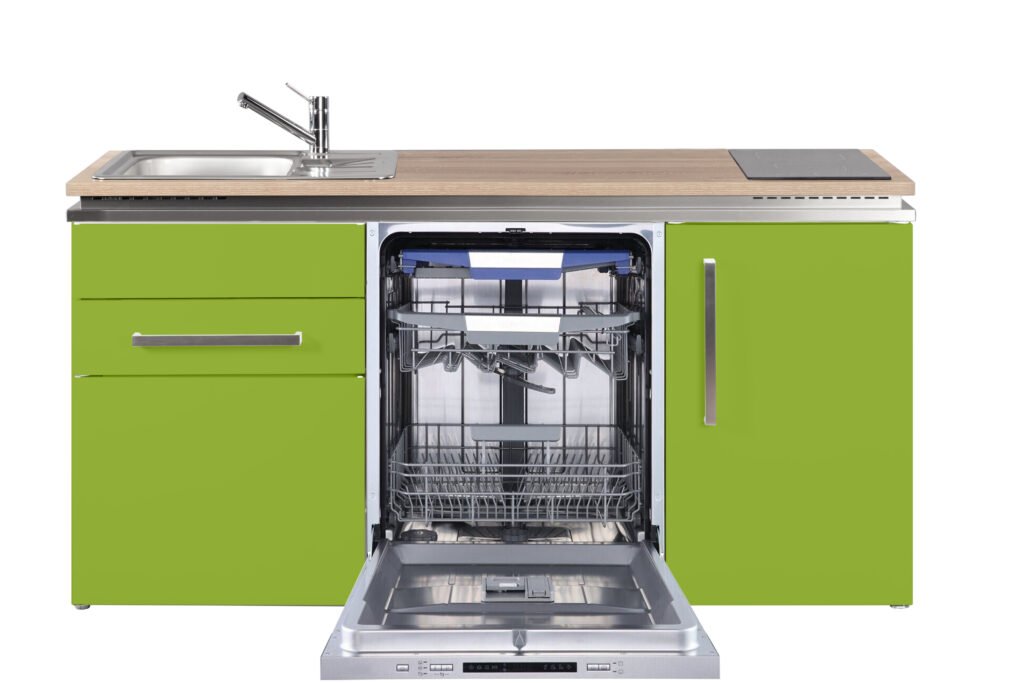Replacing a dishwasher with a mini fridge can be practical. Consider space, power needs, and ventilation requirements.

Swapping your dishwasher for a mini fridge is popular for those seeking more refrigeration space. This decision can benefit small kitchens or those who entertain frequently. Understanding the implications of this switch is crucial for a smooth transition.
Proper measurements and power compatibility are essential to avoid complications. Evaluate your kitchen layout and ensure adequate ventilation for the mini-fridge. Installing a mini fridge can be straightforward with the right tools and knowledge. Consider the long-term benefits and any potential drawbacks before making this change.
Reasons For The Switch
Switching from a dishwasher to a mini fridge can be a smart move. This change offers several benefits that can improve your kitchen’s functionality. Below, we explore the key reasons for making this switch.
Space-saving Benefits
A mini fridge takes up less space than a dishwasher. This can free up valuable room in your kitchen. You can use this extra space for additional storage or other appliances.
- Mini fridges are compact and fit in tight spaces.
- They can be placed under countertops or in cabinets.
- Extra space can be used for a small pantry or more cabinets.
| Appliance | Average Size (inches) |
|---|---|
| Dishwasher | 24 x 24 x 35 |
| Mini Fridge | 19 x 17 x 34 |
Energy Efficiency
Mini fridges use less energy than dishwashers. This can lead to lower electricity bills. Mini fridges often have energy-saving features too.
- Mini fridges consume less power.
- Many models come with energy-efficient settings.
- Lower energy use helps the environment.
Switching to a mini fridge can be an innovative and efficient choice. It saves space and energy, making your kitchen more functional and eco-friendly.

Credit: www.youtube.com
Choosing The Right Mini Fridge
Are you considering replacing your dishwasher with a mini fridge? This can be an excellent idea for those who need extra refrigeration space. Before making the switch, you must choose a suitable mini fridge—Here’s a guide to help you make the best choice.
Size And Capacity
The first thing to consider is the size and capacity of the mini-fridge. Measure the space where your dishwasher is now. Ensure the mini fridge will fit there. Mini fridges come in different sizes and shapes. You need to know how much food and drink you plan to store. A larger capacity is better for families. Smaller sizes work well for singles or couples.
| Type | Height | Width | Depth |
|---|---|---|---|
| Compact | 30-35 inches | 18-24 inches | 20-24 inches |
| Mid-size | 35-40 inches | 24-28 inches | 24-26 inches |
| Large | 40-45 inches | 28-32 inches | 26-30 inches |
Key Features To Look For
When choosing a mini fridge, look for key features that suit your needs. Here are some essential features to consider:
- Adjustable Shelves: These allow you to fit different-sized items easily.
- Energy Efficiency: Look for Energy Star-rated fridges to save on bills.
- Temperature Control: Make sure it has a thermostat for precise cooling.
- Freezer Compartment: Useful for storing frozen foods or ice.
- Noise Level: Check reviews to ensure they run quietly.
Choosing a suitable mini fridge is crucial. It ensures you have enough space and the right features. Use this guide to make an informed decision.
Preparing For Installation
Switching from a dishwasher to a mini fridge might seem daunting. Proper preparation can make the process easy. Below are steps to help you get ready.
Measuring The Space
Before starting, measure the space left by your dishwasher. Use a tape measure to get the width, height, and depth. Write these measurements down. Compare them with the size of your new mini fridge. Ensure the mini fridge will fit in the space.
Gathering Necessary Tools
Having the right tools is crucial. Here is a list of tools you will need:
- Phillips head screwdriver
- Flathead screwdriver
- Measuring tape
- Wrench set
- Utility knife
- Level
- Pliers
Gather these tools before you start. This will save you time and effort. Ensure they are in good condition and ready to use.
https://www.tiktok.com/api/img/?itemId=7193115362148338990&location=0&aid=1988
Credit: www.tiktok.com
Removing The Dishwasher
Replacing your dishwasher with a mini fridge can free up space. The first step is to remove the old dishwasher. This process involves disconnecting the water supply and safely removing the unit. Follow these steps carefully to avoid damage or injury.
Disconnecting Water Supply
First, locate the water supply valve under the sink. Turn it clockwise to shut off the water. This prevents any leaks during removal.
- Open the dishwasher door and remove the lower rack.
- Locate the water supply line connected to the dishwasher.
- Use a wrench to loosen the nut connecting the water supply line.
- Place a towel underneath to catch any water drips.
Safely Removing The Unit
After the water supply is disconnected, unplug the dishwasher from the power outlet. This ensures safety during the removal process.
- Remove the screws securing the dishwasher to the countertop. These are usually located under the front edge of the counter.
- Carefully slide the dishwasher out of its space. Take care not to damage the surrounding cabinets.
- Disconnect the drain hose from the garbage disposal or sink drain. A gentle twist should release it.
- Once free, pull the dishwasher out and set it aside.
Tip: You may need a second person to help lift and move the unit.
| Step | Action |
|---|---|
| 1 | Turn off water supply |
| 2 | Disconnect water line |
| 3 | Unplug dishwasher |
| 4 | Remove securing screws |
| 5 | Slide out dishwasher |
| 6 | Disconnect drain hose |
Once the dishwasher is out, you can install your new mini fridge.
Installing The Mini Fridge
Replacing your dishwasher with a mini fridge can optimize your kitchen space. It’s an easy process if you follow the proper steps. This section will guide you through installing the mini fridge efficiently.
Positioning The Fridge
First, choose the right spot for your mini fridge. Ensure it fits where the dishwasher is. Measure the space carefully. Leave some room for air circulation around the fridge. This helps in maintaining its efficiency.
Check that the space is level. Use a spirit level if needed. A flat surface ensures the fridge works appropriately. Also, please keep it away from heat sources. Heat can affect its cooling efficiency.
Plugging In And Testing
After positioning, it’s time to plug in the fridge. Ensure the power outlet is grounded. This ensures safety and prevents electrical issues. Plug the fridge into the outlet carefully.
Switch on the fridge and set it to the desired Temperature. ATemperaturecool for a few hours. Check if it maintains the set Temperature—STemperatureitems to test its cooling efficiency.
If everything works fine, start using your new mini fridge. Enjoy the extra space and convenience it offers.
Maintaining Your Mini Fridge
Maintaining your mini fridge is essential for keeping it efficient. A well-maintained mini fridge lasts longer and saves energy. Regular cleaning and correct temperature settings are essential.
Cleaning Tips
Proper cleaning ensures your mini fridge stays hygienic. Follow these easy steps:
- Unplug the fridge before cleaning.
- Remove all food items and shelves.
- Use a mix of warm water and mild soap.
- Wipe the interior with a soft cloth.
- Dry the inside with a clean towel.
- Clean the shelves separately and let them dry.
Clean the exterior with a damp cloth. Pay special attention to the door gasket. This part often collects dirt and grime. Ensure it is clean to keep the door sealed correctly.
Temperature Settings
Setting the right Temperature is Temperature; this keeps your food fresh and saves energy.
| Type of Food | Ideal Temperature (°F) |
|---|---|
| Dairy Products | 32-39 |
| Fruits and Vegetables | 35-41 |
| Meat and Fish | 28-32 |
| Beverages | 36-40 |
Check the temperature settings regularly. Use a fridge thermometer for accurate readings. Adjust the settings if needed.
Place a thermometer in the center of the fridge. This gives the most accurate reading. Avoid overloading your mini fridge. Proper air circulation keeps the Temperature even.
By following these tips, your mini fridge will perform at its best. Please keep it clean and set the right Temperature. YTemperaturell will stay fresh, and your fridge will last longer.
Cost Considerations
Replacing your dishwasher with a mini fridge might seem like a significant change. It’s crucial to understand the cost implications of such a switch. Let’s put down the costs into initial investment and long-term savings.
Initial Investment
The initial cost of a mini fridge can vary. Prices range from $100 to $300. The exact price depends on size, brand, and features. On the other hand, dishwashers generally cost between $400 and $700.
Here is a quick comparison:
| Appliance | Price Range |
|---|---|
| Mini Fridge | $100 – $300 |
| Dishwasher | $400 – $700 |
As you can see, the initial investment for a mini fridge is lower. This makes it a more affordable option upfront.
Long-term Savings
A mini fridge uses less electricity than a dishwasher. This can lead to long-term savings on your energy bills. Running a dishwasher daily can cost $35 to $70 annually. In contrast, a mini fridge costs around $20 to $50 annually.
Here’Here’stailed breakdown:
- Dishwasher Energy Cost: $35 – $70 per year
- Mini Fridge Energy Cost: $20 – $50 per year
Switching to a mini fridge can save you $15 to $20 annually. Over time, these savings add up. Plus, a mini fridge is cheaper to maintain.
So, the long-term savings of a mini fridge make it a cost-effective choice. You enjoy a lower initial investment and reduced energy costs.

Credit: www.youtube.com
Pros And ConAre you thinking
Thinking about replacing your dishwasher with a mini fridge? This decision has its advantages and drawbacks. Let the pros and cons help you make an informed choice.
Advantages
- Space-saving: A mini fridge takes up less room than a dishwasher.
- Energy-efficient: Mini fridges often use less electricity.
- Convenient: Keep snacks and drinks close in your kitchen.
- Cost-effective: Mini fridges are usually cheaper than dishwashers.
- Versatile: Use it in different rooms, not just the kitchen.
Potential Drawbacks
- Less storage: Mini fridges hold fewer items.
- No dishwashing: You lose the automatic dishwashing feature.
- Temperature control: Some mini fridges lack precise temperature settings.
- Limited variety: Mini fridges may come in fewer styles and sizes.
- Manual defrost: Some models require manual defrosting.
Frequently Asked Questions
Does a Mini Fridge Need Its Circuit?
Yes, a mini fridge should have its own circuit. It prevents overloading and ensures safe, efficient operation.
Can a Fridge and Dishwasher Be on the Same Circuit?
No, a fridge and dishwasher should not be on the same circuit. Both appliances require separate circuits to operate safely.
What Are the Electrical Requirements for a Mini Fridge?
A mini fridge typically requires a standard 120-volt electrical outlet. It consumes around 100-250 watts of power. Always check the user manual for exact specifications.
Can I Replace My Dishwasher With a Wine Cooler?
No, a dishwasher space cannot accommodate a wine cooler directly. They have different dimensions, power, and ventilation requirements.
Conclusion
Switching from a dishwasher to a mini fridge can optimize your kitchen space. Consider the pros and cons before making a decision. Evaluate your household needs carefully to ensure they fit your lifestyle. Making an informed choice can improve your home’s functionality and convenience.


GIPHY App Key not set. Please check settings